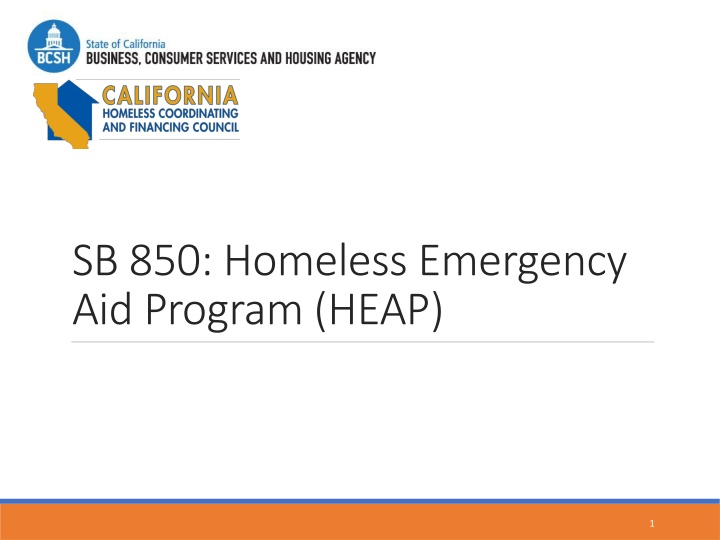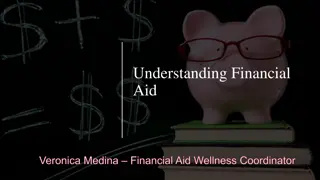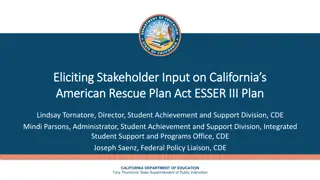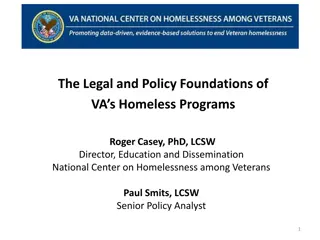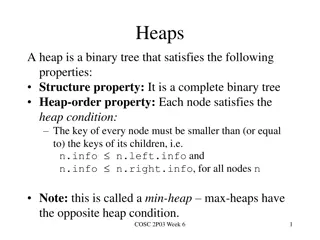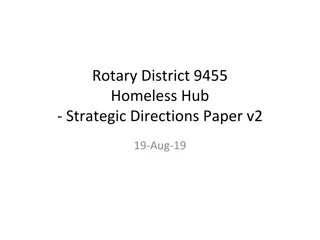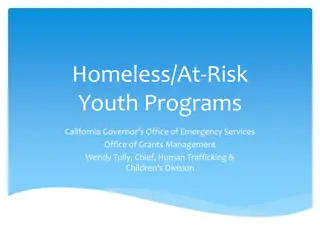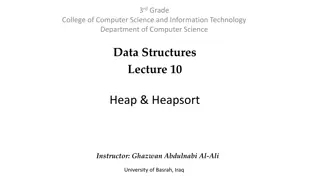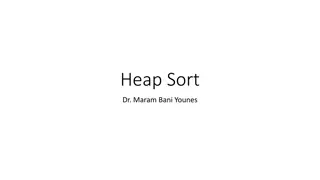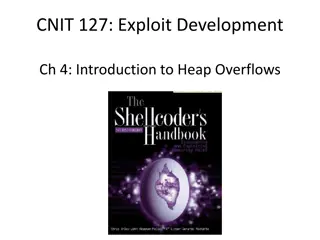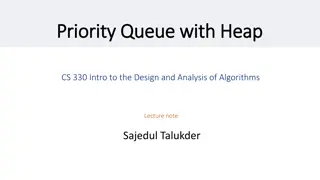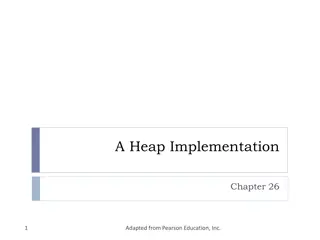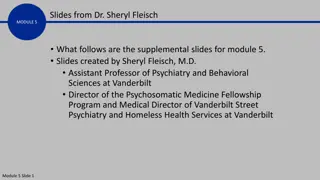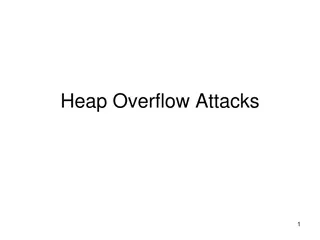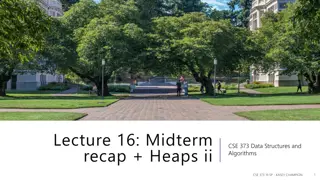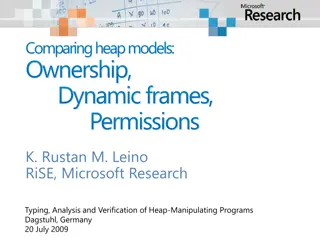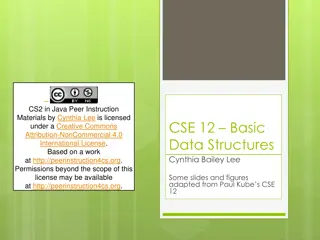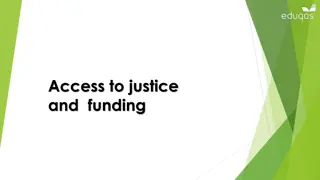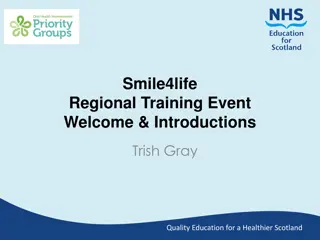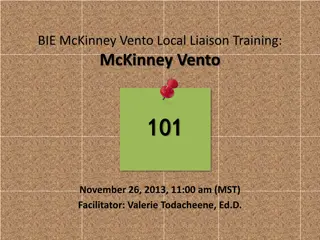Overview of SB 850 Homeless Emergency Aid Program (HEAP)
SB 850 establishes the Homeless Emergency Aid Program (HEAP) to provide flexible block grant funds to address immediate homelessness challenges in California. The program moves the Homeless Coordinating and Financing Council (HCFC) to the BCSH Agency and designates the BCSH Secretary as the HCFC Chair. Eligible applicants include large cities and Continuums of Care (CoCs) for distributing $500 million in funding to combat homelessness.
Download Presentation

Please find below an Image/Link to download the presentation.
The content on the website is provided AS IS for your information and personal use only. It may not be sold, licensed, or shared on other websites without obtaining consent from the author.If you encounter any issues during the download, it is possible that the publisher has removed the file from their server.
You are allowed to download the files provided on this website for personal or commercial use, subject to the condition that they are used lawfully. All files are the property of their respective owners.
The content on the website is provided AS IS for your information and personal use only. It may not be sold, licensed, or shared on other websites without obtaining consent from the author.
E N D
Presentation Transcript
SB 850: Homeless Emergency Aid Program (HEAP) 1
Agenda SB 850 Overview Program Timeline HCFC Team Members Eligibility Criteria HEAP Grant Overview Shelter Crisis Declaration Eligible Applicants Eligible Uses of HEAP Funds Available Funding Homeless Youth Set Aside Application Process Ineligible Uses of HEAP Funds Distribution of Funds Technical Assistance Expenditure Deadlines Contact Information Application Timeline Questions https://www.bcsh.ca.gov/hcfc/ 2
SB 850 Overview Moves the Homeless Coordinating and Financing Council (HCFC) from Department of Housing and Community Development (HCD) to the Business, Consumer Services and Housing Agency (BCSH). Designates the Secretary of BCSH as Chair of the HCFC. Adds representative to the HCFC from the Department of Transportation and a formerly homeless youth who lives in California. Provides permanent staff under BCSH to support HCFC mandates Establishes the Homeless Emergency Aid Program (HEAP) for purposes of providing localities with one-time flexible block grant funds to address their immediate homelessness challenges. https://www.bcsh.ca.gov/hcfc/ 3
HCFC Team Members Position Staff Executive Officer Ginny Puddefoot Research and Policy Specialist Kelly Joy Council Specialist Natalie Nguyen HEAP Grant Manager Daniel Castillo Local Government Liaison Lahela Mattox Data Systems Development Project Manager TBD https://www.bcsh.ca.gov/hcfc/ 4
HEAP Grant Overview HEAP is a $500 million block grant program designed to provide direct assistance to cities, counties and Continuums of Care to address the homelessness crisis throughout California. Designed to provide immediate, one-time, flexible funding. Provides support until additional resources are available (i.e. SB 2, No Place Like Home, SB 3). https://www.bcsh.ca.gov/hcfc/ 5
Eligible Applicants Applications to the HEAP program will only be submitted by the 11 large cities and the 43 CoCs identified in the HEAP Program Guidance-Attachment B. Individual persons, cities (not identified as one of the 11 large cities), counties, and/or nonprofit organizations are not eligible to apply directly to HCFC for HEAP funds. Those interested in receiving HEAP funds will apply directly to their local CoC. https://www.bcsh.ca.gov/hcfc/ 6
Available Funding HEAP funding is divided into 3 categories of distribution. Category for Distribution Funded Amount Eligible Applicants (a) CoC -Based on Point in Time Count Ranges $250M CoC (b) CoC -Based on Percentage of Homeless Population $100M CoC City / City that is also a County Based on general population $150M Large cities with a population over 330,000 Although there are two categories of funds for the CoCs, only one application will be submitted for the total amount of the CoCs allocation. Only one application will be submitted by each large city for the total amount allocated. https://www.bcsh.ca.gov/hcfc/ 7
Available Funding (continued) Continuum of Care 50213 (a) and 50213 (b) https://www.bcsh.ca.gov/hcfc/ 8
Available Funding (continued) https://www.bcsh.ca.gov/hcfc/ 9
Available Funding (continued) HEAP Large Cities Allocation CoC Jurisdiction 50213(c) Large Cities 50214(c) Minimum Number $150,000,000 Allocation Youth Set Aside Per Large City Allocation $ 4,250,680.35 $ 705,519.90 $ 569,499.36 $ 528,215.66 $ 433,555.84 $ 184,544.29 $ 184,544.29 $ 282,284.98 $ 155,276.00 $ 143,491.66 $ 62,387.68 $ $ $ $ $ $ $ $ $ $ $ CA-600 Los Angeles 85,013,607.00 CA-601 San Diego 14,110397.95 CA-500 San Jose 11,389,987.16 CA-501 San Francisco 10,564,313.22 CA-502 Oakland 8,671,116.82 CA-602 Santa Ana 3,690,885.841 CA-602 Anaheim 3,690,885.841 CA-503 Sacramento 5,645,699.61 CA-514 Fresno 3,105,519.90 CA-606 Long Beach 2,869,833.12 CA-604 Bakersfield 1,247,753.53 https://www.bcsh.ca.gov/hcfc/ 10
Available Funding (continued) The HEAP team encourages all CoCs and large cities to submit applications during Round 1. Round 1 application period is September 5, 2018-December 31, 2018 Funds not applied for in Round 1 will be redistributed among the CoCs and large cities in Round 2. Allocations will be reduced to a proportional share of the HEAP funds remaining after Round 1 The same formula distribution methodology used in Round 1 will determine the allocations in Round 2 https://www.bcsh.ca.gov/hcfc/ 11
Application Process There are two separate applications. One for CoCs and another one for the 11 large cities Streamlined process designed to quickly and efficiently award and distribute funds. Applications will be reviewed and processed as they are received. Application Map: The application map and instructions were released August 17, 2018 The application map is a tool designed to assist HEAP applicant entities collect the information necessary to complete the application https://www.bcsh.ca.gov/hcfc/ 12
Application Process (Continued) Application Submission: Online portal will open to coincide with NOFA rounds. Application does not have a save feature and must be submitted in one sitting. AEs are encouraged to use the Application Map to collect information in advance Errors or missing information will flag for the applicant; must be corrected and completed before submission is complete. The applicant will receive a confirmation email that includes a copy of the application, a tracking number, and a checklist of documents that must be submitted. The applicant must reply to the email and attach all items listed on the checklist. Documents must be submitted for the application to be considered complete Application Review and Award: HCFC Staff will review the applications as they are received. Applicants are encouraged to submit applications early. Award letters and the standard agreement will be issued simultaneously. https://www.bcsh.ca.gov/hcfc/ 14
Distribution of Funds HCFC expects to disburse the HEAP funds within 60 days of the date the application is submitted and deemed complete. A completed application includes the supporting documentation requested in the application The approval process may extend beyond 60 days if the supporting documentation is incomplete and/or if there is a delay in the AE returning the signed standard agreement 100 percent of the allocation will be disbursed once the standard agreement is executed. Funds will be issued directly to the administrative entity. The CoC will establish a process to disburse funds to all eligible cities, counties, and nonprofit organizations https://www.bcsh.ca.gov/hcfc/ 15
Expenditure Deadlines 50 percent of the awarded funds must be contractually obligated by January 1, 2020. 100 percent of the funds must be expended by June 30, 2021. Unexpended funds must be returned to BCSH. https://www.bcsh.ca.gov/hcfc/ 16
Application Timeline Round 1 The HEAP grant application process will be conducted through an online portal. Applications will be received immediately upon release of the Round 1 Notice of Funding Availability (NOFA) beginning on September 5, 2018. Round 1 NOFA Release Sep 5, 2018 Early Applications Received Starting Sep 2018 Early Applications Awarded Starting Sep 2018 Early Distribution of Funds Begins Starting in late Oct 2018 Round 1 Application Cut-off Date Dec 31, 2018 Standard Applications Awarded Jan 2019 Standard Distribution of Funds Begins March 2019 https://www.bcsh.ca.gov/hcfc/ 17
Application Timeline Round 2 Funds not applied for in Round 1 will be available in Round 2. Applications will be received immediately upon release of the Round 2 Notice of Funding Availability (NOFA) beginning on February 15, 2019. Round 2 NOFA Release Feb 15, 2019 Early Applications Received Starting Feb 2019 Early Applications Awarded Starting Feb 2019 Early Distribution of Funds Begins Starting in late March 2019 Round 1 Application Cut-off Date Apr 31, 2019 Standard Applications Awarded May 2019 Standard Distribution of Funds Begins July 2019 https://www.bcsh.ca.gov/hcfc/ 18
Program Timeline Information will be circulated to the listserv and posted to HCFC website. To subscribe to listserv: https://www.bcsh.ca.gov/hcfc/ Key Program Information and Documents Scheduled Release Date Program Guidance, Timeline, Sample Shelter Crisis Resolution, Funding Allocations August 3, 2018 HEAP Frequently Asked Questions August 10, 2018-Ongoing Application Map August 17, 2018 Application Instructions August 17, 2018 Workshops / Webinars Application Training Documents August 13, 2018 Ongoing https://www.bcsh.ca.gov/hcfc/ 19
Eligibility Criteria CoCs and large cities must demonstrate that a local collaborative process has been conducted prior to application submission. A collaborative process may include, but is not limited to, Public meetings Regional homeless taskforce meetings Letters of support with signatures of endorsement An adopted homeless plan An adopted budget which includes HEAP funds Proof of a public process may include, but is not limited to, Sign-in sheets Meeting minutes Agendas Public Comment logs https://www.bcsh.ca.gov/hcfc/ 20
Eligibility Criteria A shelter declaration for each jurisdiction wanting to be a recipient of HEAP funds must be in place at the time of award. CoCs with fewer than 1,000 homeless people, based on the 2017 HUD Point in Time count are exempt and can file a waiver with their application. The county may declare a shelter crisis for the unincorporated areas of the county and is allowed to expend HEAP funding for county activities that serve all county residents. Jurisdictions are not required to declare a shelter crisis. However, any jurisdiction that does not declare a shelter crisis is ineligible to be a direct recipient of HEAP funds. https://www.bcsh.ca.gov/hcfc/ 21
Shelter Crisis Declaration The CoC or a Joint Powers Authority that acts as the CoC may not declare a shelter crisis. The declaration is a resolution that must be adopted by the governing body of a jurisdiction or jurisdictions within a CoC or large city. A sample Resolution is located in the HEAP Program Guidance. https://www.bcsh.ca.gov/hcfc/ 22
Eligible Uses of HEAP Funds HEAP funds are intended to provide immediate emergency assistance to people experiencing homelessness or at imminent risk of homelessness. The parameters of the program are intentionally broad to allow local communities to be creative and craft programs that meet the specific needs that have been identified. Applicants will include in their proposals how the proposed activity is directly related to providing immediate emergency assistance to people experiencing homelessness or at imminent risk of homelessness. The uses must align with California s Housing First policy. https://www.bcsh.ca.gov/hcfc/ 25
Eligible Uses of HEAP Funds Examples include, but are not limited to: Services: Street outreach, health and safety education, criminal justice diversion programs, homelessness prevention activities, and other service activities. Rental assistance or subsidies: Housing vouchers, rapid re-housing programs, flexible housing subsidy funds, and eviction prevention strategies. Capital improvements: Emergency shelter, navigation centers, transitional housing, permanent supportive housing, small/tiny houses, and improvements to current structures that serve homeless individuals and families. Some communities are discussing solutions to address homelessness and the public health crisis by using funds for handwashing stations or public toilet and shower facilities. Administrative costs: are allowed, but capped at five percent of program funds. This does not include staff costs directly related to carrying out program activities. Other https://www.bcsh.ca.gov/hcfc/ 26
Homeless Youth Set Aside At least five percent of HEAP funds must be used to establish or expand services meeting the needs of homeless youth or youth at risk of homelessness. 5 percent is the MINIMUM, there is no maximum. The HEAP team encourages and expects local CoCs and large cities to work with youth advocates and youth service providers to determine the most appropriate services for this target population. Consistent with other state and federal definitions, HCFC considers homeless youth to mean an unaccompanied homeless individual who is not older than 24, for purposes of HEAP. Homeless individuals not older than 24 who are parents are included in this definition. https://www.bcsh.ca.gov/hcfc/ 27
Ineligible Uses of HEAP Funds Generally, if HEAP funds are used to pay for activities that serve homeless individuals or families or those at imminent risk of homelessness, the uses are allowed, with the following restrictions: Jurisdictions that have not declared a shelter crisis may not be the direct recipient of HEAP funding. CoCs, cities, counties, and nonprofit organizations may not use HEAP funds for capital projects, such as building or expanding a shelter or navigation center, or for rental assistance, within a jurisdiction that has not declared a shelter crisis. HEAP funds cannot be used to fund HMIS infrastructure or improvements. HEAP funds cannot be used to create a strategic plan for addressing homelessness. HEAP funds cannot be expended after June 30, 2021. Any long-term projects that would require payment after that date are not appropriate uses of HEAP funds. Expenditures not intended for the purposes of providing aid for persons who are homeless or at imminent risk of homelessness are not appropriate uses of HEAP funds. https://www.bcsh.ca.gov/hcfc/ 28
Technical Assistance HCFC will provide ongoing technical assistance and training to support CoCs and large cities. Housing and Community Development (HCD) and HCFC have scheduled workshops to provide information (see schedule). HCFC will schedule additional workshops and webinars. https://www.bcsh.ca.gov/hcfc/ 29
CITY DATE LOCATION TIME Registration In person registration Track 1: NPLH 10:00 am-4:30 pm Meeting number: 731 023 870 Meeting password: NPLH1 Join the webinar Audio Only: (877) 873-8018 Access code: 9035096 HCD Workshop Schedule Sacramento August 24 CA Department of Housing and Community Development Room 402 2020 W El Camino Ave, Sacramento, CA 95833 10:00 am-4:30 pm Track 2: CESH/HEAP 10:00 am-4:30 pm Software download Join the webinar Audio Only: (877) 336-1829 Access code: 2636575 Elihu Harris Building Room 1 1515 Clay St Oakland, CA 94612 Tulare County Office of Education Redwood EF 6200 S Mooney Blvd Visalia, CA 93277 California Tower Room 200 3737 Main St Riverside, CA 92501 In person registration Oakland August 30 10:00 am-4:30 pm September 7 In person registration Visalia 10:00 am-4:30 pm In person registration Riverside September 10 10:00 am-4:30 pm https://www.bcsh.ca.gov/hcfc/ 30
Contact Information Additional information regarding the HEAP program is available on the HCFC website. https://www.bcsh.ca.gov/hcfc/ To receive information releases regarding the HEAP program, please register for the program listserv If you have questions, please direct them to the HCFC inbox at HCFC@BCSH.ca.gov Social media https://twitter.com/CA_HCFC https://www.facebook.com/CalHCFC/ https://www.bcsh.ca.gov/hcfc/ 31
Contact Information Danny Castillo, HEAP Grant Manager 916-651-2788 Daniel.Castillo@bcsh.ca.gov Lahela Mattox, Local Government Liaison 916-651-2770 Lahela.mattox@bcsh.ca.gov https://www.bcsh.ca.gov/hcfc/ 32
QUESTIONS? https://www.bcsh.ca.gov/hcfc/ 33
